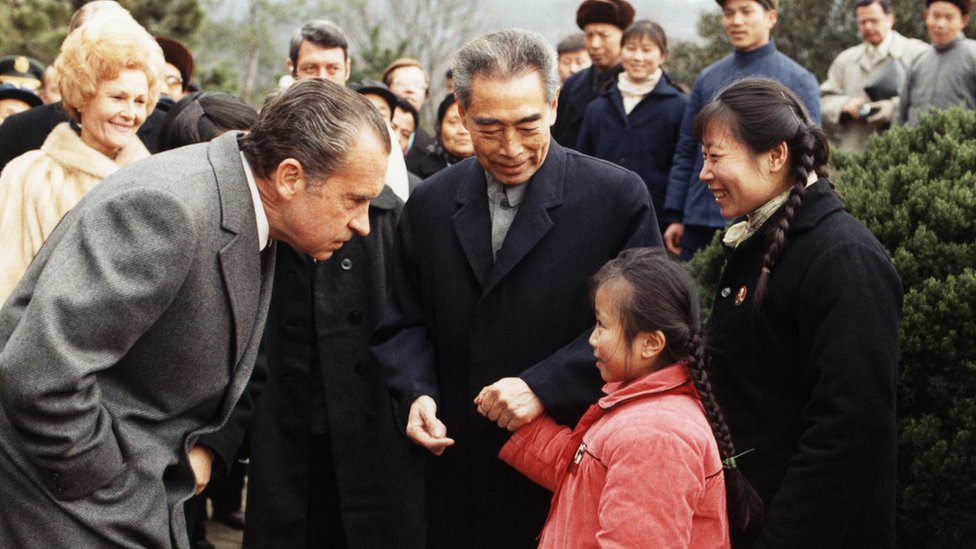February 21, 1972, was the start of the week that changed the world, as President Richard Nixon put it. He called it that because it was the start of his eight-day visit to communist China, something that no U.S. president had done since the founding of the People’s Republic of China in 1949. Because of the ideological differences between America and China, nobody expected America to make much effort to improve diplomatic ties between the nations.
At the time, the U.S. had no real relationship with China at all, but the Soviet Union, another communist nation, did. Because it was the height of the Cold War, the U.S. was eager to minimize the Soviet Union’s influence across the world. It also wanted a settlement in the Vietnam War and, though China was not formally involved, it did support the North Vietnamese. Finally, the U.S. also wanted a peaceful solution to the Taiwan situation. So it was decided that Nixon would make the grand gesture of traveling to China to see what he could do about these issues.
Nixon largely achieved his goals there. The trip resulted in the Shanghai Communique, which was a promise for each nation to set aside its differences and start working to normalize ties between the countries. Since then, “Nixon going to China” has become a popular idiom for saying that a politician is doing something totally unexpected in the hope of a big payoff.

